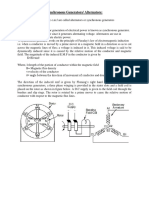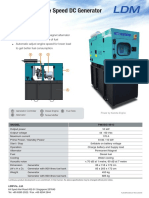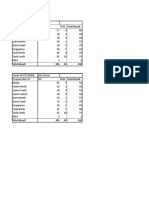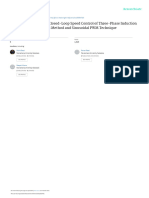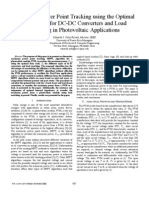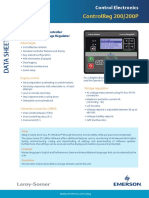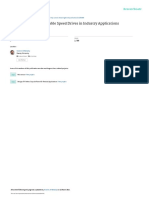0% found this document useful (0 votes)
79 views21 pagesAC Generator Fundamentals
AC generators use either a rotating armature or rotating magnetic field to generate alternating current. They consist of a stator with stationary windings and a rotor that rotates within the stator. The two main types of rotors are salient pole and cylindrical. Salient pole rotors have projecting poles and are used for lower speeds, while cylindrical rotors have a smooth surface and are for higher speeds. As the rotor spins within the stator, it induces an alternating current in the stator windings. Synchronous speed and frequency depend on the number of poles and rotational speed. Proper synchronization of voltage, frequency and phase is required when connecting an alternator to a power network or running multiple alternators in parallel. Some
Uploaded by
ganeshagarwal9759Copyright
© © All Rights Reserved
We take content rights seriously. If you suspect this is your content, claim it here.
Available Formats
Download as PDF, TXT or read online on Scribd
0% found this document useful (0 votes)
79 views21 pagesAC Generator Fundamentals
AC generators use either a rotating armature or rotating magnetic field to generate alternating current. They consist of a stator with stationary windings and a rotor that rotates within the stator. The two main types of rotors are salient pole and cylindrical. Salient pole rotors have projecting poles and are used for lower speeds, while cylindrical rotors have a smooth surface and are for higher speeds. As the rotor spins within the stator, it induces an alternating current in the stator windings. Synchronous speed and frequency depend on the number of poles and rotational speed. Proper synchronization of voltage, frequency and phase is required when connecting an alternator to a power network or running multiple alternators in parallel. Some
Uploaded by
ganeshagarwal9759Copyright
© © All Rights Reserved
We take content rights seriously. If you suspect this is your content, claim it here.
Available Formats
Download as PDF, TXT or read online on Scribd
/ 21








































